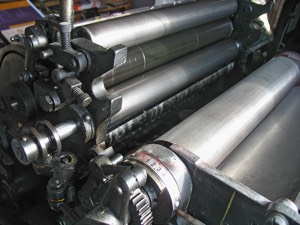Most people can deduce from the name that a magalog is a combination of a magazine and a catalog. That’s true, but I also like to think of it as an expanded sales letter with glossy images, engaging text and advertorial content.
The look, feel and style of a magalog is just as important as its content. So, think bold covers, big headlines, glossy pages and contemporary design and you’re starting to get the idea.
It’s also important to note that a magalog isn’t always a direct sales tool the way a catalog might be. For example, you may simply want to promote brand awareness, push a specific event, encourage a response or solicit new contacts. Of course, your end goal is going to be sales, but that doesn’t necessarily mean all magalogs have to have an order form on the back.
How can companies create their own magalog?
1. Create and Design
Because so much of a magalog’s appeal is about its design, look and content, the majority of your efforts (and budget) are going to (or should be) be directed towards those areas. That means hiring an editor and writers or enlisting gifted staff members to write articles and content for your magalog. It also means finding a designer able to create a look and style that mimics popular magazines.
You’re investing a lot when you create, print and mail a magalog, so the last thing you want is for it to end up in the garbage with the rest of the junk mail. To prevent that, you need a good-looking product that’s engaging to the reader.
I know that printing is listed as step two here, but you should really be talking to a printer before you begin the design process and throughout it. A magalog is a complex beast and a good printer can help with suggestions that will lower costs (both printing and mailing) or prevent you from spending thousands on a cut-out, embossed design that could end up costing thousands more just to print.
Despite my protests that a magalog needs to be glossy and big to grab a reader’s attention, there are exceptions. For example, I’m looking at what’s essentially a magalog that we picked up from Whole Foods grocery store a few weeks ago. It’s printed on rough, recycled paper with a minimal use of inks and dyes. It’s useful because it’s full of lunch ideas for kids, recipes, and articles on food choices (not to mention coupons and piles of sales copy).
2. Print
Again, printing may be listed here as step two, but your printer should really be part of the whole magalog process right from the beginning. They can help guide your design, answer cost questions and assist you in developing a final budget for the project.
When choosing a printing company, look for someone with an in-house bindery and binding equipment capable of doing the whole job at one location. The more cooks in your kitchen, the more complex (and costly) your project will be. Instead, look for a printer that has the offset printing and binding equipment necessary to do the whole job.
Finally, never proof a magalog digitally. Always deal with a real, printed and tactile proof that you can hold in your hands, feel and really look at. A magalog’s appeal goes beyond its look or flashy design and extends to its weight, readability and how it feels in the reader’s hands.
3. Distribute
Most magalogs go out by mail and to a specific target list of customers. They’re either sent as media mail self-mailers or shipped in envelopes and the total cost of mailing depends, of course, on the size and weight of each unit (something to consider throughout your design process).
Other magalogs are distributed directly to the consumer at the point of sale (like the Whole Foods’ magalog flyer), at an event or through free newstands.
Finally, remember that not every company needs a magalog in its arsenal. It’s better to wait until you have the resources, the content and the potential customer base to make a good magalog then spend your money on a subpar product. And, always ask yourself, “why do I want to create a magalog?” Don’t do it because it’s popular, do it because it’s the right sales tool for your customers.

